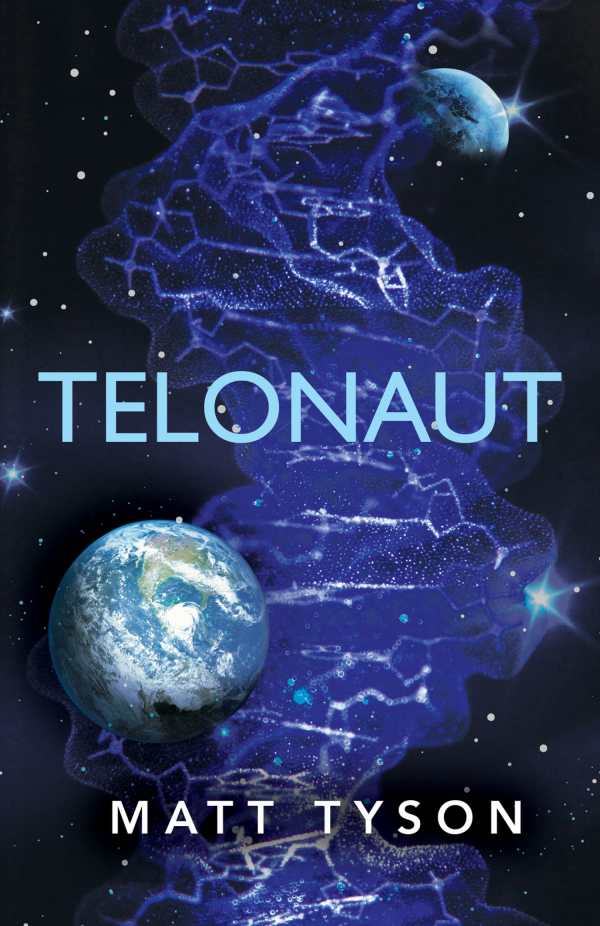
Telonaut
Epic in scope, Telonaut takes no less than Earth’s governance and all of space as its stage.
Telonaut, Matt Tyson’s science-fiction dystopia, uncovers the dark side of the new world order’s space colonization program and unearths the problems latent in humankind’s most benevolent visions of itself. Tyson’s sprawling story ricochets around the universe, but largely focuses on friends Minnus and Sero—one on Earth and one in space—as they discover that their great contribution to humankind’s knowledge base may not survive the malign forces hidden within and without.
Earth has recovered from an economic collapse dire enough to fell nations and fold governments. The new world order, known as the Race, emerged from Uganda, and the order of the day is not currency but knowledge. Best friends Minnus Mbeki and Sero Novak see their chance in the telonaut program—a technology that transmits people through space as data streams.
However, between concerns about the mental and physical strain on Sero and increasing pressure from cloak-and-dagger political organizers on Earth, the friends’ formula for producing cutting-edge “edutainment” is breaking down. Separated by time and space, each friend races against the clock and pursues his own leads, attempting to root out answers and go public about the corruption they were told couldn’t exist in their scientific utopia.
The story is told in fractured narrative, skipping between past and present, Earth and distant planets, and various characters. This technique works best when it’s narrowly focused. Especially in the beginning of the novel, narrative volleys between Minnus and Sero’s past and present enhance the element of mystery; their stories unfold piecemeal, and the depiction of their past informs the danger of their present in interesting ways. As the story’s arc expands, perspective and pacing become more problematic. Minnus and Sero’s voices are given unequal narrative weight, new characters are introduced, and unnamed voices sometimes take over the point of view.
Sero, the character at the heart of the story, is wholly defined by his status as “Mr. Universe,” the lone telonaut auditor. As such, he’s more affected by the technology than most. He’s age-delayed because of his telonaut traveling, and there are suggestions that his mind may be affected as well. Questions about Sero’s mental stability add tension to his unfolding mission, especially as these questions spiral out to include the planetary colonists themselves. However, that same tension ratchets up into discomfort as Sero’s engagement in gratuitous sex and misogynistic relationships with women is portrayed not as evidence of his instability, but as evidence of his normalcy.
The telonaut program is a fascinating idea, especially as it becomes apparent that, for all its cutting-edge technology and grand mission, it’s producing less education and more entertainment, with a potentially high cost to its participants. Unfortunately, the program, and much of the book’s science, is never clearly defined. Although the book is heavy on exposition, characters frequently dismiss the science as too difficult to fully explain or understand. Yet understanding the science of this future world is fundamental to suspending disbelief and fully entering its fictional space.
A wobbly first foray, Telonaut is epic in scope. It takes no less than Earth’s governance and all of space as its stage, and there’s potential in this world.
Reviewed by
Letitia Montgomery-Rodgers
Disclosure: This article is not an endorsement, but a review. The publisher of this book provided free copies of the book and paid a small fee to have their book reviewed by a professional reviewer. Foreword Reviews and Clarion Reviews make no guarantee that the publisher will receive a positive review. Foreword Magazine, Inc. is disclosing this in accordance with the Federal Trade Commission’s 16 CFR, Part 255.
